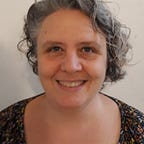Rural women at the centre of development
On the International Day of Rural Women (15 October) we look at how four UN agencies are working together to empower them
Being the mother of two children, Jeanette, from Rwanda, could not easily find farming work. “Not every employer wants to hire a woman with small children. We could not afford to pay for the health insurance or to lease land on which we could grow crops,” she says.
Guatemalan mother-of-four Agustina also found it hard to make ends meet. To get by, she had to rely on loans that would likely result in more debt. “I did not have savings. People would lend me money with high interests that I could not even calculate. I did not know what I was getting myself into,” she recalls.
Rural women like Jeanette and Agustina make up over a quarter of the total world population and represent approximately 43 per cent of the agricultural labour force. Yet in developing countries across the globe, deep-rooted gender inequalities — coupled with poor access to land, credit and agricultural assets, as well as reliance on traditional farming techniques — mean they are prevented from fully contributing to their families’ livelihoods and sustainable development.
Together with the Food and Agriculture Organization of the United Nations (FAO), the International Fund for Agricultural Development (IFAD) and UN Women, the World Food Programme (WFP) is providing rural women in seven countries with the skills and support they need to reverse the situation.
Running since 2014 with the support of Norway and Sweden, the joint initiative on “Accelerating Progress towards the Economic Empowerment of Rural Women” (JPRWEE) is being implemented in Ethiopia, Guatemala, Kyrgyzstan, Liberia, Nepal, Niger and Rwanda.
“Being able to discuss with other women was eye opening.”
For Jeanette, Agustina and thousands of others it has been a life changer. After joining a cooperative through the programme, Jeanette broke out of her isolation. “Being able to discuss with other women was eye opening,” she says.
In less than one year, she was able to improve her livelihood and now runs her own small business. “With this extra money, I can take better care of my two children. I am also planning to lease land during the next season and use my new skills to contribute even more to my family’s income and wellbeing.”
For her part, a training session taught Agustina that she could start a savings and credit group in her own community. The group started with 11 women — “some did not trust the idea,” she explains — each contributing a small sum (US$ 1.33 approximately). A few months later, the group had grown to 20 members, with a capital of US$ 1,140.
“Everyone benefits from participating in the group. If an emergency happens, we can get credit in our own community at a low interest rate. And we have money to buy the things we need,” she says.
“I feel so proud when my voice is heard at the family and community level. This was never the case before.”
In Nepal, the programme has helped Sangita, an energetic and hardworking mother belonging to the marginalized Janajati ethnic group, to join a women farmers’ group and improve her farming and marketing techniques. She is now growing vegetables including chillies, tomatoes, cucumbers and eggplants, and her income per season has more than doubled.
The programme is also boosting participants’ self-confidence and amplifying their voices: “I feel so proud when my voice is heard at the family and community level. This was never the case before and, for that, I am grateful,” Sangita says.
Learn more about the Joint Programme on Accelerating Progress towards the Economic Empowerment of Rural Women
Original materials and quotes provided by Azzurra Chiarini, WFP Gender Division.
